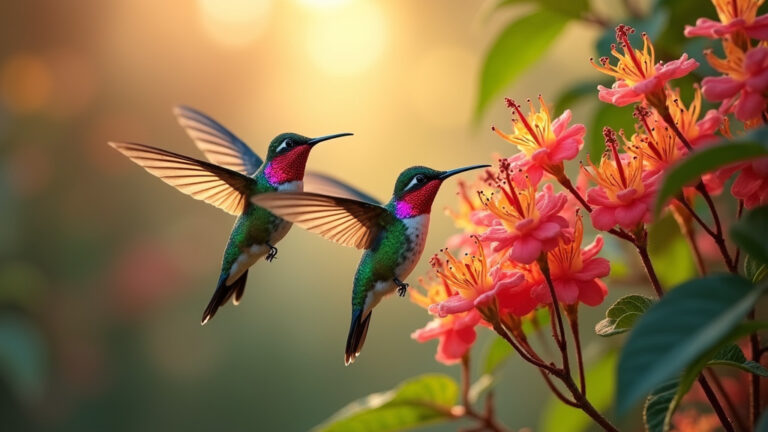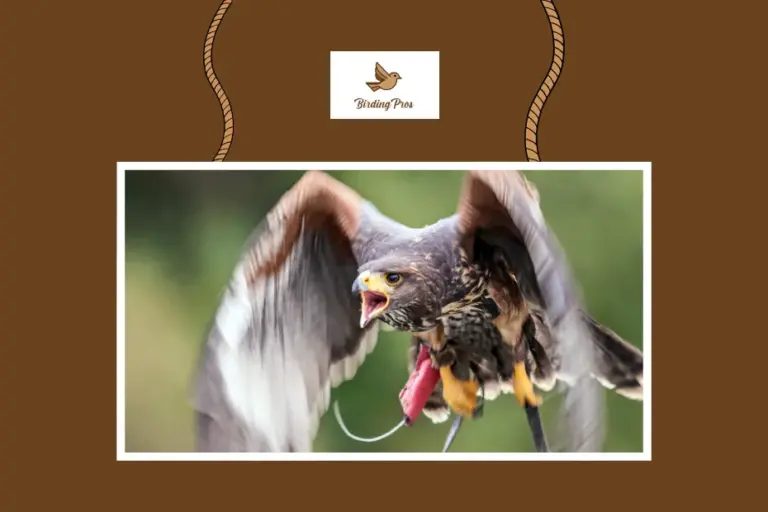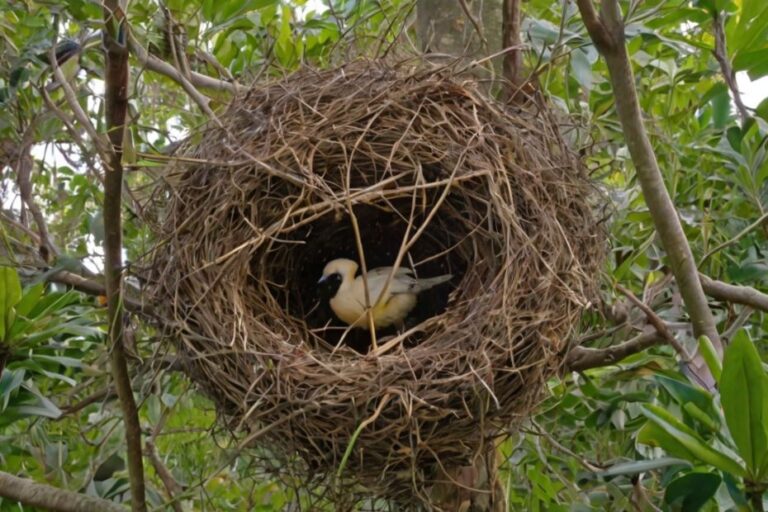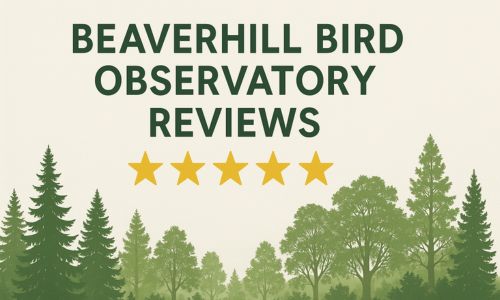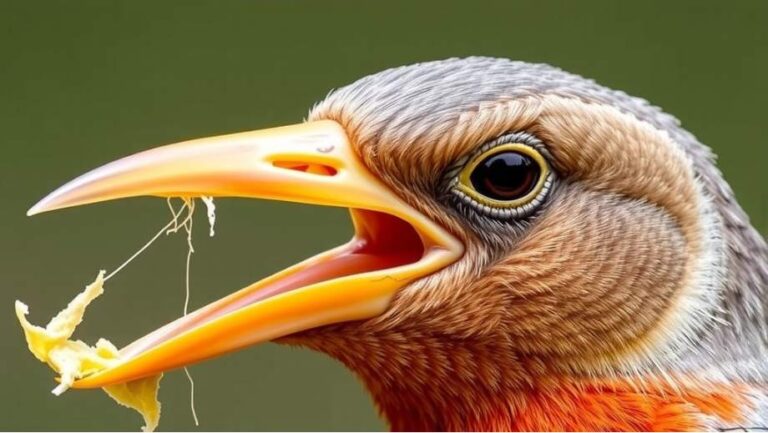Birds of Prey in Georgia USA: List of All Birds
Have you ever looked up at the Georgia sky and seen a large bird circling overhead? Chances are, you’ve spotted one of the many magnificent birds of prey that call our state home.
From the powerful bald eagle to the nimble American kestrel, Georgia’s diverse landscapes provide the perfect habitat for these aerial hunters. Join me as we explore the fascinating world of raptors in the Peach State.
Table of Contents
What Are Birds of Prey?
Before we dive into the specific species found in Georgia, let’s talk about what makes a bird a “bird of prey.” Also known as raptors, these birds are characterized by their sharp talons, hooked beaks, and keen eyesight.
They’re nature’s perfect hunters, built for capturing and killing their prey with precision and power.
As a bird enthusiast, I’ve spent countless hours observing these creatures in their natural habitats.
Trust me when I say there’s nothing quite like watching a hawk swoop down to catch its dinner or hearing the distinctive cry of an osprey as it fishes in one of Georgia’s many lakes.
Birds of Prey in Georgia USA
| Bird of Prey | Description |
|---|---|
| Bald Eagle | Iconic large bird with a white head and tail, known for soaring over lakes and rivers. |
| Red-tailed Hawk | Commonly seen soaring in open areas, known for its reddish tail. |
| Cooper’s Hawk | A medium-sized hawk that hunts smaller birds in wooded areas. |
| Sharp-shinned Hawk | Similar to the Cooper’s Hawk but smaller, hunts in dense forests. |
| Peregrine Falcon | Fastest bird in the world, often seen diving to catch prey mid-flight. |
| Osprey | Known for fishing, often seen near lakes and rivers. |
| Eastern Screech Owl | Small, camouflaged owl that hunts insects and small animals at night. |
| Great Horned Owl | Large owl with “horns” (tufts of feathers), hunts various prey. |
| Barn Owl | Recognizable by its heart-shaped face, hunts mainly at night. |
| American Kestrel | Small falcon, often seen perched on telephone wires in open areas. |
Here’s a list of some common birds of prey found in Georgia, USA
Bald Eagles: America’s Bird in the Peach State
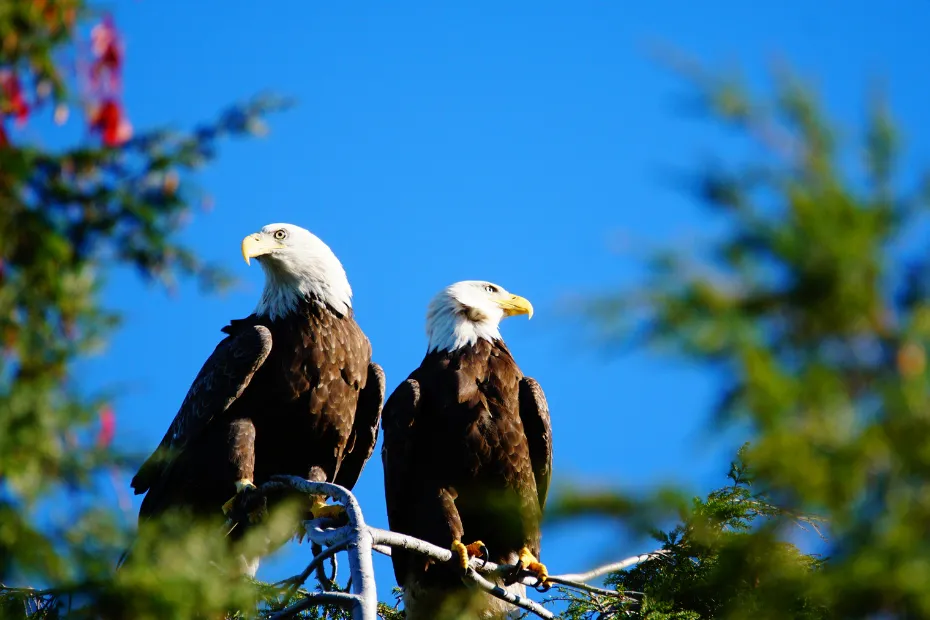
When we think of birds of prey, the bald eagle often comes to mind first. As our national symbol, these majestic birds hold a special place in American culture. But did you know that Georgia is home to a thriving bald eagle population?
I’ll never forget the first time I saw a bald eagle in the wild. I was kayaking on Lake Allatoona when I spotted a massive nest high up in a pine tree. As I watched, an adult eagle swooped in with a fish in its talons. The sight of that white head and tail against the blue Georgia sky was breathtaking.
Bald eagles are most commonly found near large bodies of water, where they can fish for their favorite prey. In Georgia, you’re likely to spot them around our major lakes and along the coast. Some popular viewing spots include:
- Lake Allatoona
- West Point Lake
- Lake Lanier
- The Okefenokee Swamp
Conservation efforts have helped bald eagle populations rebound in recent decades. Today, seeing one of these magnificent birds is a testament to the success of wildlife protection programs in our state.
Red-tailed Hawks: The Highway Hunter
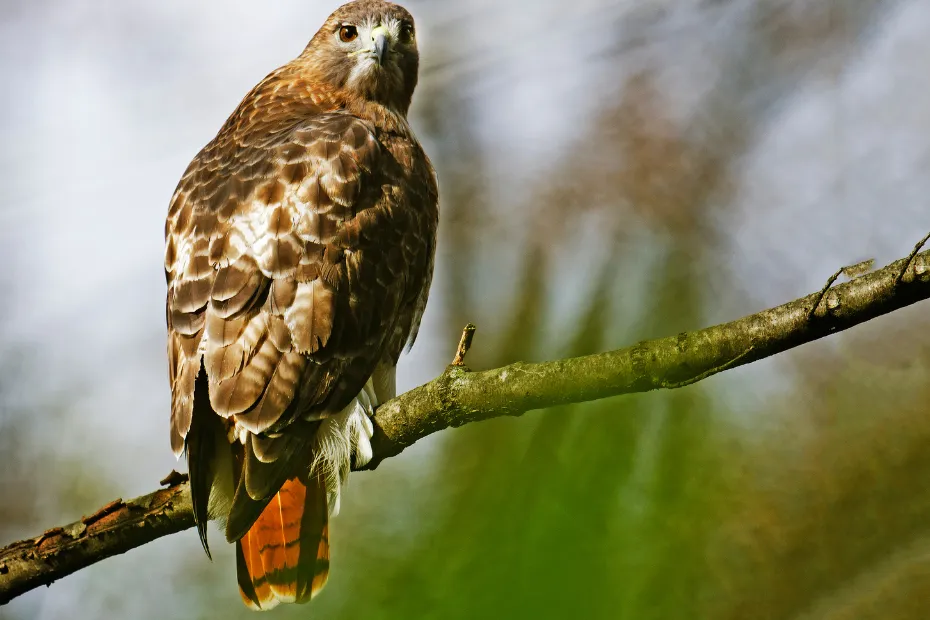
If you’ve ever driven along a Georgia highway, chances are you’ve seen a red-tailed hawk perched on a telephone pole or soaring above the fields. These adaptable raptors are one of the most common birds of prey in North America, and they’ve made themselves right at home in our state.
Red-tailed hawks are relatively large birds, with females typically larger than males. They’re known for their distinctive rusty-red tails, which give them their name. These hawks are versatile hunters, feeding on everything from small mammals to reptiles and other birds.
I once watched a red-tailed hawk hunting in a field near my home. Its ability to hover almost motionless in the air before diving down to catch a mouse was truly impressive. It’s no wonder these birds have become so successful in both rural and urban environments across Georgia.
Ospreys: The Fish Hawks of Georgia’s Waterways
If you spend any time near Georgia’s lakes, rivers, or coastal areas, you’re likely to encounter the osprey. These specialized fish-eating raptors are a common sight around our state’s waterways, where they dive feet-first to catch their slippery prey.
Ospreys are unique among North American raptors in their diet and hunting methods. Their feet are specially adapted for gripping fish, with sharp, curved talons and rough pads that help them hold onto their catch. Watching an osprey plunge into the water and emerge with a fish is truly a spectacle of nature.
One of my favorite places to observe ospreys is along the Georgia coast. The salt marshes and estuaries provide perfect hunting grounds for these skilled fishers. If you’re lucky, you might even spot an osprey nest – large, messy structures often built on man-made platforms or dead trees.
American Kestrels: Georgia’s Smallest Falcon
Not all birds of prey are large and imposing. The American kestrel, North America’s smallest falcon, is a common sight in Georgia’s open fields and grasslands.
These colorful little raptors are about the size of a mourning dove, but don’t let their small stature fool you – they’re fierce predators of insects, small mammals, and birds.
I love watching kestrels hover over fields, their wings beating rapidly as they scan the ground for prey. It’s amazing to see how these tiny falcons can stay almost perfectly still in the air, even in windy conditions.
In Georgia, you’re most likely to spot American kestrels in rural areas with plenty of open space. They often perch on telephone wires or fence posts, keeping a keen eye out for their next meal.
If you’re lucky, you might even see one perform its spectacular courtship flight, a series of deep dives and climbs that showcase the kestrel’s aerial agility.
Habitat and Conservation: Protecting Georgia’s Birds of Prey
As impressive as these birds are, many of Georgia’s birds of prey face challenges in our modern world. Habitat loss, pollution, and human disturbance all pose threats to raptor populations. That’s why conservation efforts are so crucial to ensuring these magnificent birds continue to soar over our state for generations to come.
The Importance of Wetlands and Forests
Many of Georgia’s raptors rely on wetlands and forests for hunting and nesting. The Okefenokee Swamp, for example, is a crucial habitat for a variety of birds of prey, including ospreys, bald eagles, and various hawk species. Protecting these areas is essential for the survival of our raptor populations.
I’ve had the privilege of visiting the Okefenokee several times, and each trip reinforces the importance of preserving these unique ecosystems. Watching a swallow-tailed kite glide effortlessly over the swamp, its forked tail steering it through the air, is a sight I’ll never forget.
Urban Adaptation: Raptors in Our Cities
While many birds of prey prefer wild spaces, some species have adapted surprisingly well to urban environments. Red-tailed hawks and Cooper’s hawks, for instance, can often be found in city parks and suburban areas. These urban raptors play an important role in controlling rodent and pigeon populations in our cities.
I once spotted a Cooper’s hawk nesting in a tall pine tree right in the middle of Atlanta’s Piedmont Park. It was fascinating to see this wild predator thriving in the heart of the city, a reminder that nature can adapt and persevere even in the most unlikely places.
Conservation Success Stories
Georgia has seen several conservation success stories when it comes to birds of prey. The bald eagle, once endangered, has made a remarkable comeback thanks to protection efforts and the banning of DDT.
Peregrine falcons, another species that was once on the brink of extinction, have been successfully reintroduced to the state and can now be seen nesting on skyscrapers in Atlanta.
These success stories show that with proper protection and management, we can ensure a bright future for Georgia’s birds of prey. However, ongoing conservation efforts are still crucial to protect these magnificent birds and their habitats.
Read More: Birding Hotspots in Idaho: Discover the Best Sites for Birdwatching
Observing Birds of Prey in Georgia
Now that we’ve explored some of Georgia’s most interesting raptors, you might be wondering how you can observe these birds for yourself.
Birdwatching can be a rewarding hobby, and with a little patience and know-how, you can become an expert at spotting and identifying birds of prey in the wild.
Best Locations for Raptor Watching
Georgia offers numerous excellent locations for observing birds of prey. Here are a few of my favorite spots:
- Kennesaw Mountain National Battlefield Park: This park is known for its hawk watch during fall migration. On a good day, you might see hundreds of broad-winged hawks passing overhead.
- Jekyll Island: The coastal habitats here attract a variety of raptors, including ospreys and bald eagles.
- Piedmont National Wildlife Refuge: This inland area is home to a diverse array of hawks and owls.
- Sweetwater Creek State Park: Located just outside Atlanta, this park offers opportunities to see red-tailed hawks, ospreys, and even the occasional bald eagle.
- Harris Neck National Wildlife Refuge: This coastal refuge is an excellent place to observe ospreys and bald eagles.
Tips for Successful Raptor Watching
If you’re new to birdwatching, here are some tips to help you get started:
- Invest in a good pair of binoculars. They don’t have to be expensive, but they should be comfortable to use and provide clear images.
- Learn to identify raptors by their silhouettes. Often, you’ll see these birds soaring high in the sky, and being able to recognize their shape can help you identify them.
- Pay attention to habitat. Different species prefer different environments, so knowing where to look can increase your chances of spotting specific birds.
- Be patient and quiet. Birds of prey can be easily startled, so move slowly and speak softly when you’re out birdwatching.
- Consider joining a local Audubon Society chapter or birdwatching group. Experienced birders can help you learn to identify different species and show you the best local spots for raptor watching.
The Role of Raptors in Georgia’s Ecosystems
Birds of prey play a crucial role in maintaining the balance of Georgia’s ecosystems. As top predators, they help control populations of small mammals, birds, and insects. This natural form of pest control benefits both wild areas and agricultural lands throughout the state.
For example, the barn owl, a nocturnal raptor found throughout Georgia, is known for its voracious appetite for rodents. A single barn owl family can consume over 3,000 rodents in a year! This natural rodent control is invaluable to farmers and helps reduce the need for harmful pesticides.
Raptors also serve as indicators of environmental health. Because they’re at the top of the food chain, these birds can accumulate toxins present in their prey.
Monitoring raptor populations and health can provide early warnings about environmental contaminants and other ecosystem threats.
Raptor Rehabilitation: Helping Injured Birds
Unfortunately, not all encounters between humans and birds of prey end well for the birds. Collisions with vehicles, windows, or power lines can leave raptors injured and in need of help. That’s where raptor rehabilitation centers come in.
Georgia is home to several wildlife rehabilitation centers that specialize in caring for injured birds of prey. These centers play a vital role in conservation efforts by treating and releasing injured raptors back into the wild.
I’ve had the opportunity to visit one of these centers, and it was a truly eye-opening experience. Seeing these powerful birds up close, and learning about the challenges they face in our modern world, gave me a new appreciation for the work these rehabilitators do.
If you ever come across an injured raptor, it’s important not to try to handle the bird yourself. Instead, contact a licensed wildlife rehabilitator or your local Department of Natural Resources office for assistance.
The Future of Birds of Prey in Georgia
As we look to the future, the outlook for Georgia’s birds of prey is cautiously optimistic. Many species have shown remarkable resilience and adaptability in the face of human development and environmental changes.
However, ongoing challenges such as habitat loss, climate change, and pollution continue to pose threats to these magnificent birds.
Conservation efforts will play a crucial role in ensuring the continued survival and success of Georgia’s raptor populations. This includes protecting and restoring critical habitats, reducing the use of harmful pesticides, and promoting sustainable land use practices.
Education is also key. The more people understand and appreciate these birds, the more likely they are to support conservation efforts.
Whether it’s through school programs, nature centers, or simply sharing your own experiences with friends and family, we can all play a part in raising awareness about the importance of birds of prey in our ecosystems.
Conclusion: The Enduring Majesty of Georgia’s Birds of Prey
From the towering pines of North Georgia to the sweeping salt marshes of the coast, birds of prey are an integral part of our state’s natural heritage. These magnificent creatures embody the wild spirit of Georgia, reminding us of the power and beauty of the natural world that surrounds us.
I hope this exploration of Georgia’s birds of prey has inspired you to look up and marvel at these incredible animals. Next time you’re out enjoying Georgia’s great outdoors, keep an eye on the skies – you never know what majestic raptor you might spot!

